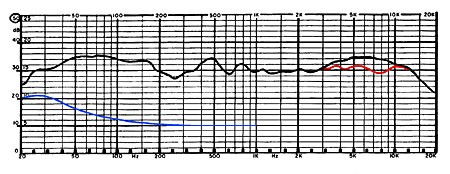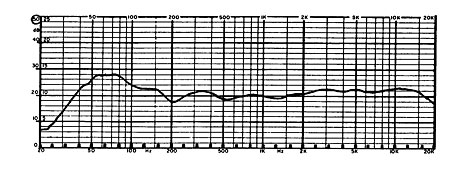| Columns Retired Columns & Blogs |
In fact it's horrible at driving these or any of the thiel product range.
Tony in Venice
The CS3 has quite remarkable detail, sounding more like a good horn-loaded system than a direct radiator in this respect, but without the usual horn-like raucousness and sizzle. In fact, Larry Archibald and I were so bowled over initially by the sound of these speakers that we were thinking of calling Thiel and requesting a pair for every staff member. But as we have learned through years of listening experience, first impressions are not always reliable and certainly do nOt reflect the listening durability of a component—particularly a loudspeaker.
Problems
It took several hours, spread out over several days, for me to realize that there was something slightly wrong here. I first suspected it when I observed that the CS3 seemed to be exaggerating disc surface-noise ticks and pops. My first reaction was that it was just reproducing their transient content better than I am accustomed to hearing it, but it soon became evident that this was not entirely the case. The speakers were slightly exaggerating the upper-brightness (lower-treble) region; they were not steely, just somewhat hard.
Several discs and tapes later, I be came aware of something that I think had been bothering me for some time but that I had not yet been conscious of. All recordings played through these speakers had a rather cold, slightly pinched quality.
A large segment of the middle range sounded slightly depressed. Brass instruments were deficient in their characteristic bell coloration (best described as an awk quality, and illustrated by talking through open, cupped hands), and most woodwinds had their normal ratio of overtones to body-resonance sounds biased in favor of the overtones. The clincher here was an original tape I had made of a familiar tenor voice. It still sounded familiar, but its quality was unmistakably lightened.
The sound of our first sample of the CS3 varied with listening height, changing dramatically when one stood up. With my ears about 4' above the floor (representing a very uncomfortable bent-knees listening position), the slight hardness virtually disappeared. The reason for this became clear when I later ran frequency response curves on the system (footnote 2); a change in height (of the probe microphone) from 36" to 48" caused the entire range from 4 to 10kHz to drop by about 4dB (fig.1)! The effect of this could be duplicated by tilting the speakers forward by about 5°. Obviously the tilt causes cancellation between the midrange driver and the tweeter, thus degrading the speaker's phase coherence. But my ears—and my measurements—showed that the frequency response was in fact better with this cancellation taking place.

Fig.1 Thiel CS3, frequency response of first sample (average of six measurements) on axis 36" from floor (black) and 48" from floor (red), with low-frequency response of active equalizer (blue) (10dB/large vertical div).
When Jim Thiel heard the above comments, he was at first inclined to think we were nitpicking for the sake of finding fault. (That's supposed to be part of the "underground-magazine" mystique.) When he subsequently ran some measurements, he found that the SEAS midrange drivers delivered for his first 100 pairs of CS3s (of which our review samples were one) were significantly different in the upper part of their range from the ostensibly same midrange driver he had used to develop his prototypes. When running QC tests on the finished speakers this fault was not immediately obvious, but it showed up dramatically in curves run on just the midrange driver. Jim requested that we retest the CS3s, with "corrected" drivers hurriedly supplied by SEAS. (The CS3 production line was shut down for nearly a month just when dealers were clamoring for samples.)
The sound of the "correct" system was identical to that of our first sample except for one thing: the hardness, the exaggeration of disc surface noise and most of the middle-range suckout were gone! (The revised speaker's frequency response is shown in fig.2; the low-end rise in this graph was not evident in listening—the speaker sounded flat.)

Fig.2 Thiel CS3, frequency response of second sample (average of six measurements) on axis 36" from floor (10dB/large vertical div).
The slightly laid-back quality of our first sample remained (though with none of the hardness), particularly when auditioned from a low listening seat. The CS3's sound would best be described as rich and a little polite rather than authoritative and startlingly alive. It still had that remarkably extended and clean high end, very punchy and deep low end, and pinpoint imaging.
Summing Up
The Thiel CS3 is not the last word in speakers, then, but it substantially out performs most others of similar price. I think it should be given a fair hearing (in the home) by anyone seeking a speaker in its price range. You'll know soon enough if it's just the speaker for you.—J. Gordon Holt

In fact it's horrible at driving these or any of the thiel product range.
Tony in Venice